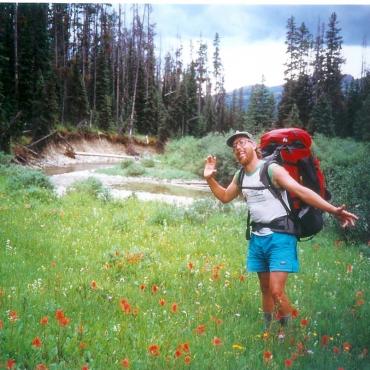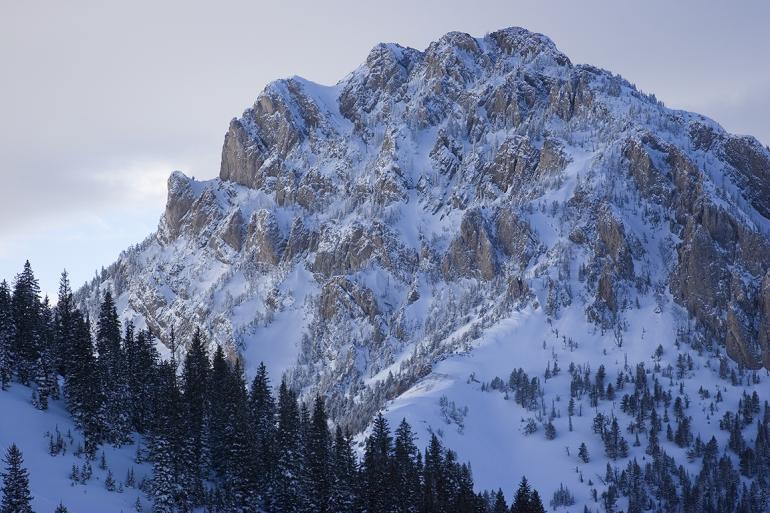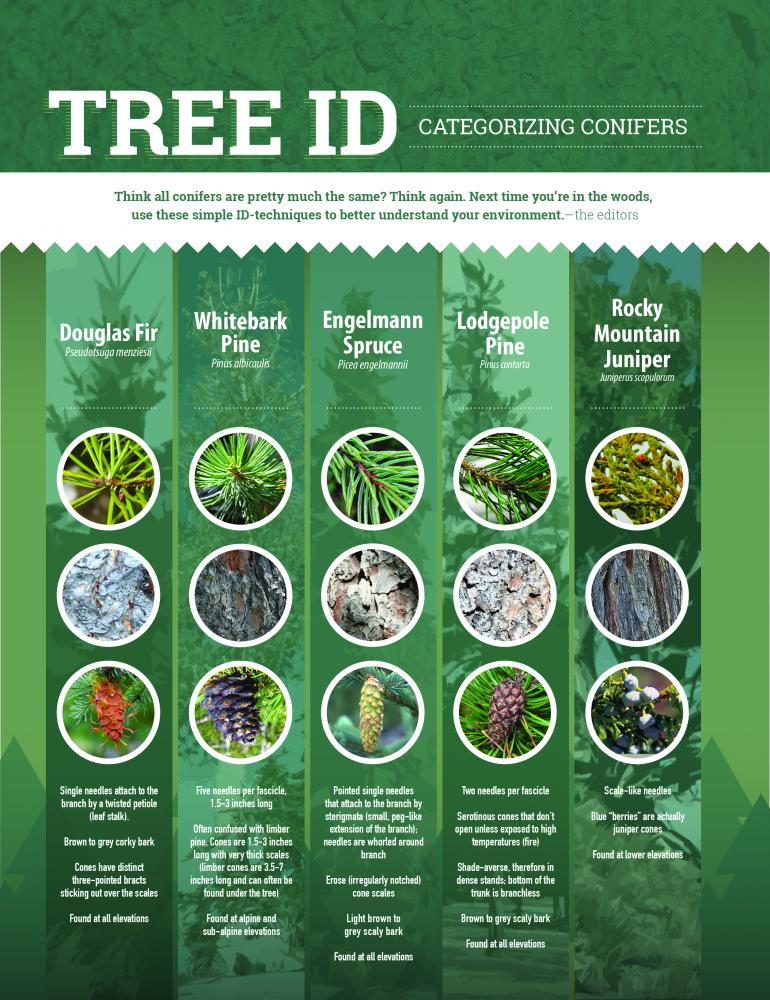Tree ID
Life would be a bummer without trees. They provide shade, water storage, wildlife habitat, food, wood, soil protection, and innumerable other benefits. But do you even know what type of tree you are sitting under? Is that evergreen just a “pine,” or is it something else?
In the Greater Yellowstone area, it’s easy to identify most trees because we very few different species. Learn the following and you then wow your friends with your expert knowledge of the woods.
Whitebark Pine (Pinus albicaulis)
Whitebark pine is found near treeline at higher elevations throughout Greater Yellowstone and north into British Columbia. Its wide, shrublike form contrasts beautifully with the subalpine fir also found at these elevations. It is a five-needle pine and grows as krummholz (stunted) at treeline.
The nuts of Whitebark pinecones are important food for squirrels, birds, and grizzly bears, which fatten up on these nuts in the fall. Native Americans ate the nuts as well and used the roots to sew bark canoes. Unfortunately, blister rust and climate change severely threaten Whitebark Pine and Limber Pine, its relative.
Lodgepole Pine (Pinus contorta)
The most common of trees in Greater Yellowstone, Lodgepole pine carpets vast areas of the Park and is infamous for its ability to burn. Lodgepole reproduces rapidly after a fire thanks to its specialized serotinous cones, and it has only two long needles per bundle. Used as teepee (or lodge) poles by Native Americans, this tall, straight pine makes excellent house logs and fence poles. It grows from 31 to 64 degrees north in western North America.
Subalpine fir (Abies lasiocarpa)
Subalpine fir are hearty evergreens found at high elevations from southern Arizona all the way north to the Yukon. These dark evergreens have a spirelike shape and often grow near Whitebark pine. Their limbs are flexible and easily shed heavy snow loads. Subalpine fir also grows as krummholz at treeline and may form small, dense groves that provide excellent shelter for people, birds, and other animals. Fir needles are soft and flat.
Engelmann Spruce (Picea engelmannii)
Engelmann Spruce enjoy wet, shady sites and are often found in wet draws and along north-facing slopes. They’re common in western Canada and the northern Rockies, and they are in isolated areas of the southern Rockies. Engelmann spruce are also tolerant of shade and long, snowy winters. Spruce needles are sharp and square.
Douglas fir (Pseudotsuga menziesii)
Known as the most popular of Christmas trees, the Douglas fir is also one of the largest and tallest growing trees in North America. In Greater Yellowstone, Douglas fir is generally the largest tree in the forest. After Lodgepole pine, they are the most common tree in the mountains around Bozeman.
Mature Douglas firs survive forest fires by developing thick, fire-resistant bark on their lower trunks. As with most evergreens, pollenization of cones occurs in spring and mature seeds and cones drop in the fall. Red squirrels eat the seeds of this tree.
Black Cottonwood (Populus trichocarpa)
As you travel the rivers and creeks of southern Montana and Yellowstone country, note the large cottonwoods shading the rivers and holding the creek banks. These are Black Cottonwood, deciduous trees found from northern Mexico to southern Alaska. Cottonwoods grow only where water is abundant. They are the “tree of life” in the arid west, and many species of birds depend on them for nesting and resting habitat. Beavers cut them down for food and shelter.
Cottonwoods are the largest members of the poplar family and are related to aspens. Their seeds float long distances due to the downy cotton that coats them and gives the tree its name. The bark is deeply furrowed, and mature trees develop a wide canopy.
Quaking Aspen (Populus tremuloides)
Quaking aspen is a well-known tree that grows in small stands in Greater Yellowstone. Its smooth, cream-colored bark often bears scars from black bears that have climbed the trees to eat buds. Aspen generally reproduce by "cloning": sending up shoots from extensive root systems. This is why groves of aspen are really all one tree. The leaves turn gold and drop in September and October, but the tree retains chlorophyll in the bark and keeps growing in winter. Aspen bark is a survival food for elk in winter, and beaver cut the trees to build dams and eat the tender outer branches.








